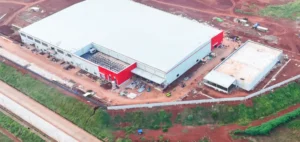According to the industry association SolarPower Europe, 54 GW of new installations are expected. Despite the expected rebound in the discounted cost of energy, the share of solar in the European energy mix is expected to double.
The dawn of the solar age in Europe
Michael Schmela, Director of Market Intelligence at SolarPower Europe, states:
“Perhaps 2022 will be remembered in Europe as the dawn of the solar age.”
He notes the importance of the war in Ukraine and the palliatives needed for Russian gas. He adds that solar energy checks all three boxes of the energy trilemma: sustainability, affordability and security of supply.
Bruno Brunetti, global head of low-carbon power analysis at S&P states:
“Despite short-term uncertainty created by inflation, revenue caps, and market reform, the acceleration of distributed solar power and the resumption of projects are helping to sustain solar growth in Europe. Western Europe will thus continue to lead the solar boom. Solar’s share is expected to double from 8% currently to 20% in 2030.”… “Strong corporate renewable energy procurement targets are supporting the growth of the solar sector, both via APPs and GOs.”
Brunetti expects EU GOs to average 6 euros/MWh by 2023. In addition, S&P analysts are raising their forecast for solar additions from 5 to 6 GW/year over the 2022-2027 period. These additions will contribute to the growth of the solar sector in Europe.
PPA pricing platform Pexapark quoted a 10-year PPA index for European solar at 83.52 euros/MWh on December 20. This is an increase of 29% over previous levels.
However, regional prices may differ considerably, thus affecting the growth of the solar sector in Europe. The Pexapark index for Spain was set at 52.54 euros/MWh while the index for Germany was set at 92.86 euros/MWh.
Rising cost of solar projects linked to inflation
According to S&P, price increases for solar modules are expected to decline as supply chain bottlenecks are resolved and raw material costs fall. As an example, the price of polycrystalline silicon declined in Q4 2022 to 35.48 USD/kg. This represents an 8% decrease compared to Q3.
Another element is affecting the growth of the solar sector in Europe. The average capital expenditure for a solar project is increasing, especially in Germany. This increase is about 30% over the last two years, setting the average at 640,000 USD/MW. For example, photovoltaic modules alone account for 45% of the cost in Germany. However, Germany may lift its support for solar auctions for a variety of reasons, according to S&P.
In addition, S&P expects solar LCOEs to moderate again in 2023 and decline over the longer term. German LCOEs are expected to fall from USD 50/MWh in 2022 to USD 35/MWh in 2023. For comparison, Spanish LCOEs are expected to fall from around USD 40/MWh in 2022 to USD 20/MWh in 2023.
Solar energy back on the map in Europe
At the same time, the increasing dependence on China is becoming a problem for the growth of the solar sector in Europe. Ursula Von Der Leyen, President of the EC, proposes the creation of a raw materials club as a remedy. It provides additional support to counter the U.S. Inflation Reduction Act (IRA). Indeed, this one has similar objectives to Repower Eu.
According to S&P, strengthening network infrastructure and workforce skills are the most important areas beyond a stable regulatory framework. Moreover, two-thirds of the EU’s 209 GW of installed solar capacity is still on rooftops. This segment, which is growing faster than large-scale projects, will be of increasing importance according to Schmela.
S&P’s Schmela also believes the battery business will become viable in part because of rising electricity bills. S&P calculates that the battery market should reach 9.3 Gwh of capacity by the end of 2022, more than triple the 2020 level. 1 million European homes would then be equipped with batteries. Schmela states:
“A sometimes overlooked technology, batteries have essentially become a standard component of home solar systems in major markets.”
The mandatory solar panel requirements that the EU is putting in place will help accelerate the energy transition to photovoltaics. S&P’s Brunetti says that one major uncertainty remains for 2023, however: the planned reform of the EU’s gas and electricity market. The aim of this is to break the link between electricity and gas prices. A large number of models are being debated to define the modalities of solar growth in Europe. However, there is no clear guidance on how or whether to move away from the marginal price model.






















